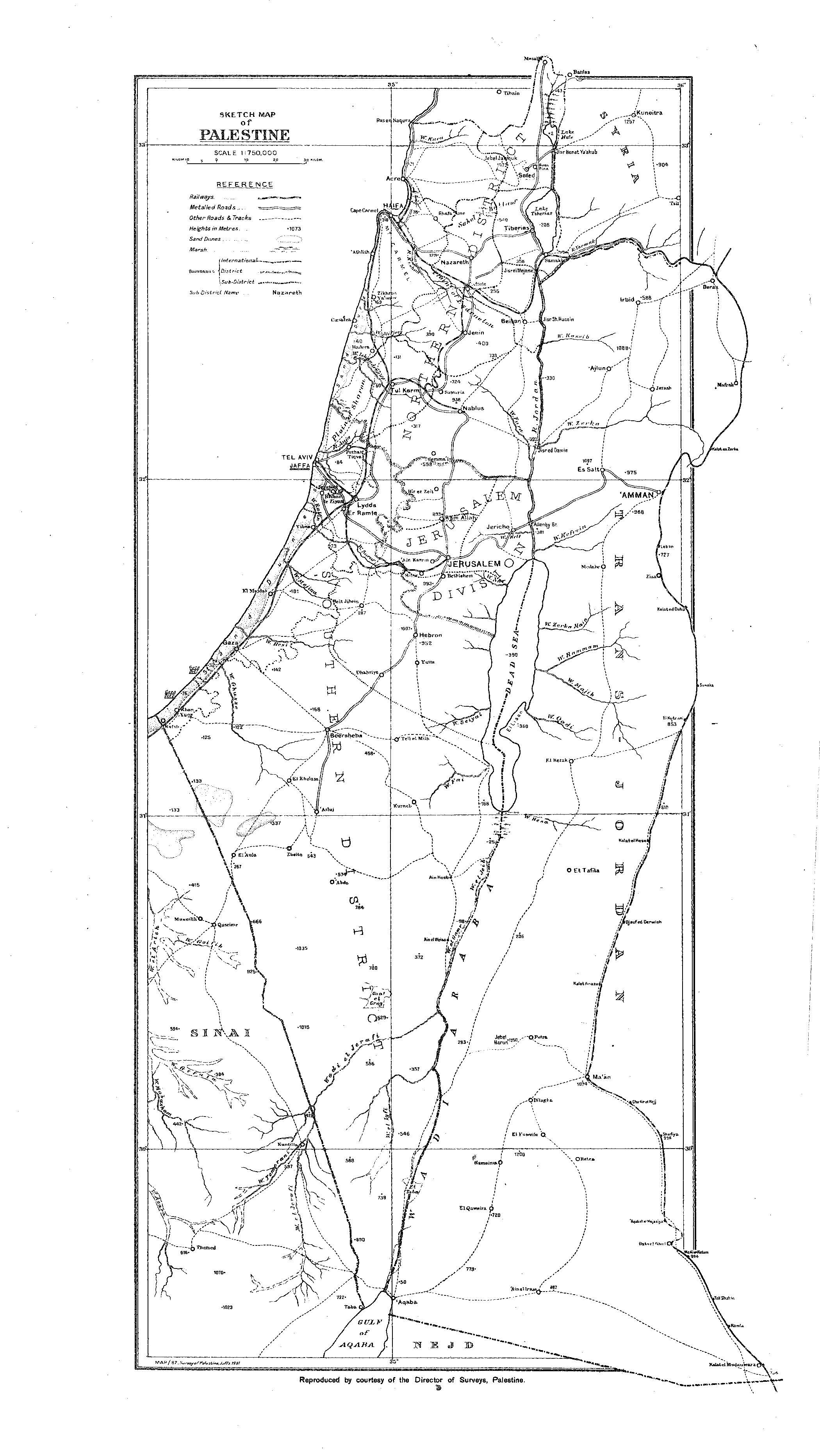British Census of Palestine 1931
(1931)
 |
Click to enlarge
The British conducted a census in 1931 while administering the mandate for Palestine. The report started by defining the area of Palestine. “For purposes of this Report the eastern boundary is the median line of the Jordan Valley running south to a point just west of Aqaba because that part of Palestine which lies east of the Jordan, and which is known as Trans-Jordan, is under a separate administration, and the census of Palestine taken in 1931 relates only to that part of the whole territory which lies west of the Jordan [River]” (p. 9).
The report noted that the land area of Palestine is 25,483 square kilometers (just under 10,000 square miles). The British transferred 10.5 square kilometers (4 square miles) to Syria from Palestine after 1922 and 68.75 square kilometers (27 square miles) to Transjordan. Palestine had a net gain in territory, however, from the transfer of 307.50 square kilometers (119 square miles) from Syria (p. 17).
Note that the Jewish population doubled during this period, but the change in the non-Jewish population (187,196) was greater than the entire Jewish population (174,610). According to these figures, Jews comprised 17% of the total population of Palestine, Muslims 73%, and Christians 9% (p. 67).
Population Change in Palestine Between 1922 and 1931
|
|
Actual Population |
Change |
Percent Change |
Percentage of Population |
|
|
|
1922 |
1931 |
|
|
|
|
Muslims |
590,890 |
759,712 |
168,822 |
29 |
73 |
|
Jews |
83,794 |
174,610 |
90,816 |
108 |
17 |
|
Christians |
73,024 |
91,398 |
18,374 |
25 |
9 |
|
Total |
757,182 |
1,035,821 |
278,639 |
37 |
|
Of the Jewish population, 73,195 (42%) were born in Palestine and 101,415 (58%) in other countries – 20% were born in Poland, 16% were born in Russian territories and about 10% were born in various Asiatic countries. Of the population born in foreign countries, 79%, representing 80,347 persons, were born in European countries. Of those born in European countries, nearly 45% were born in Poland, 34% were born in Russia and only 0.5% were born in the United Kingdom (pp. 60-61).
The report also noted the development of the Jewish community and referred to it as a “nationality” whereas the Arab community had only “a vague conception of an Arab ‘nationality’”:
When referring to Palestinians, the report includes Jews, Muslims, and Christians (p. 69). No mention is made of any Palestinian nationality.
Source: E. Mills, “Census of Palestine 1931, Vol. 1,” (Alexandria: Whitehead Morris Ltd., 1933).


